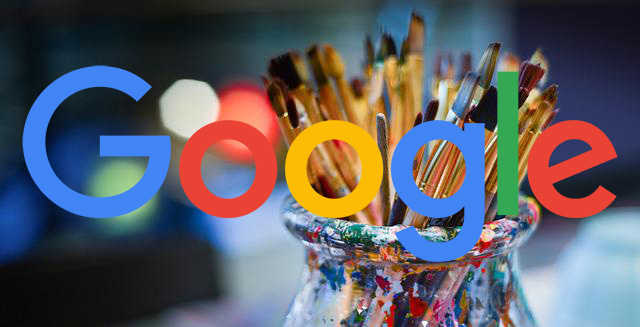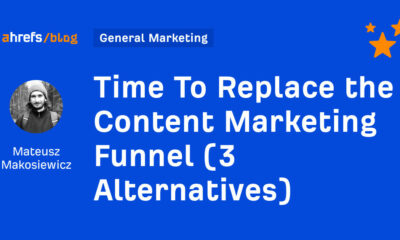SEARCHENGINES
Google May Replace FID With INP

At Google I/O last week, Google’s Annie Sullivan and Michal Mocny introduced a new metric named INP or Interaction to Next Paint. INP measures overall responsiveness to user interactions on the page and it may or may not replace FID, First Input Delay, as a Core Web Vitals metric.
I know a lot of SEOs obsess about Core Web Vitals, despite it not being an even subtle ranking signal, but because it is easy to sell and actually does benefit users and conversions. So I felt it is important to finally cover what is going on with INP, Interaction to Next Paint, and Core Web Vitals.
To be clear, nothing has changed yet with Core Web Vitals and INP is very much in the experimental phase. But there is a chance that INP will be added to Core Web Vital and / or replace FID in Core Web Vitals.
This was announced at Google I/O in this session at about 6 minutes in:
Michal said “FID has some fairly large blind spots.” He said “and that’s why we are introducing a new experimental responsiveness metric, Interaction to Next Paint. INP is a full-page lifecycle metric, just like Cumulative Layout Shift. That means it measures all interactions, not just the first. We call that runtime responsiveness to help differentiate from just loading responsiveness. INP measures the whole input latency, from when a user interacts until they actually see a visual response, not just the initial delay on main thread.”
This is about making sure the web site lets you interact with it within a short period of time. The example on the right gives immediate visual feedback that an image is being fetched from the network. This visual feedback underscores the importance of communicating a result of an interaction.

INP is a metric that aims to represent a page’s overall interaction latency by selecting one of the single longest interactions that occur when a user visits a page. For pages with less than 50 interactions in total, INP is the interaction with the worst latency. For pages with many interactions, INP is most often the 98th percentile of interaction latency.
Phil Walton from Google also tweeted about it:
First up: INP 🚀
We now have a name and definition for the responsiveness metric we’ve been talking about for the past year.
It’s called “Interaction to Next Paint” (INP), and you can learn all about it in this fantastic talk by @anniesullie & @mmocny:https://t.co/5zyTgTLkDw
— Phil Walton (@philwalton) May 12, 2022
So many SEOs are nervous about it, but Annie Sullivan from Google told us to not worry, we can give feedback in the thresholds and other elements.
We love feedback over twitter, but it’s really hard to track.
Our official channel is [email protected]; please send it there if you don’t want us to miss it.
— Annie Sullivan (@anniesullie) May 12, 2022
Google yesterday wrote a blog post explaining the differences between FID and INP, Glenn Gabe summed it up nicely in these tweets with these screenshots:
More: We will take steps to provide more actionable guidance on the metric in 2022-23. We hope to achieve this by:
* Creating channels for easy access to field data on INP for frameworks & web developers
* Work with frameworks to build features that will improve INP by default pic.twitter.com/V4yBYFagDL— Glenn Gabe (@glenngabe) May 16, 2022
Google said “We expect the INP score to provide a better compass for websites to improve responsiveness and performance in the future. We will take steps to provide more actionable guidance on the metric in 2022-23.”
There is also a Twitter Spaces interview with Annie Sullivan where Annie answers a bunch of questions around INP. This includes mentions around Google replacing FID with INP. You can listen to it over here.
INP is something to have on your radar but not to panic about – espesially over SEO concerns.
Forum discussion at Twitter.
Source: www.seroundtable.com
SEARCHENGINES
Daily Search Forum Recap: April 18, 2024
Here is a recap of what happened in the search forums today, through the eyes of the Search Engine Roundtable and other search forums on the web.
Google Ads notified advertisers that some ad customizers will stop working soon. Google discontinued the limited use video carousel markup. Google Maps has new directions and travel features, plus a bunch of new EV features. Google Notes on Search might not end in May 2024 despite what people suggest. Google Business Profiles asked businesses to register their defibrillators, their AEDs.
Search Engine Roundtable Stories:
-
Google Notes On Search Won’t Necessarily Go Away In May
There have been some people noticing that the Google Notes On Search labs experiment has an end date of May 2024 and thus they are expecting Notes on Search to be turned off by then. Just because it has that end date listed, it does not mean the labs experiment will end on that date. -
Google Maps Releases New Directions, Travel & EV Features
Google has announced a number of new travel features with Google Maps and Travel around driving alternatives, trains and buses, travel impact mode and then some new EV driving direction features. Google says these features are to give you more “sustainable choices.” -
Google Ads Reminds Advertisers Some Ad Customizers Will Go Away May 31st
On August 31, 2021, Google notified advertisers it would drop support for expanded text ads for responsive search ads. Google is now reminding advertisers that Ad customizers for text ads, expanded text ads and Dynamic Search Ads will stop serving after May 31, 2024. -
Google Drops Video Carousel Markup
Google has discontinued its support for video carousel markup and has thus removed it from its video structured data help documentation. Initially, Google tested video carousel on a limited number of sites and is now saying that it “ultimately found that it wasn’t useful for the ecosystem at scale.” -
Google Business Profiles Register Your Defibrillator (AED)
Google sent out emails a couple of days ago to businesses asking them to register their Automated External Defibrillator (AED) with Google Business Profiles. Google said, “you could save lives” if you do it. -
Google NYC Earthquake Reaction Video
A couple of weeks ago we had an earthquake in the New York region and I finally found a video from the Google NYC office of the reaction of some Googlers while the earthquake happened. These Googlers were recording a video and felt it but were unsure if that was a real earthquake.
Other Great Search Threads:
Search Engine Land Stories:
Other Great Search Stories:
Analytics
Industry & Business
Links & Content Marketing
Local & Maps
Mobile & Voice
SEO
PPC
Search Features
Other Search
Feedback:
Have feedback on this daily recap; let me know on Twitter @rustybrick or @seroundtable, on Threads, Mastodon and Bluesky and you can follow us on Facebook and on Google News and make sure to subscribe to the YouTube channel, Apple Podcasts, Spotify, Google Podcasts or just contact us the old fashion way.
SEARCHENGINES
Daily Search Forum Recap: April 17, 2024
Here is a recap of what happened in the search forums today, through the eyes of the Search Engine Roundtable and other search forums on the web.
The Google March core update still is causing volatility and it is deepening. Google may make changes to the crawl stats report in Search Console. Google Search Console now shows unused ownership tokens. Google Maps will drop the review drafts. Google Add added generative AI for image generate for Demand Gen campaigns. Google Search is testing more sitelinks designs.
Search Engine Roundtable Stories:
-
Deepening Google Core Ranking Volatility Hits Yesterday & Today
I know we just reported on more volatility this Monday, possibly related to the Google March 2024 core update, but we are seeing even more volatility over the past 24 hours related to this update. This volatility shows deepening movement for those who were hit, which is incredibly sad in many cases. -
Google Search Console Adds Unused Ownership Tokens
Google Search Console has a new security feature under user and permission management to help you manage your unused ownership tokens. Basically, it helps you manage who has permissions to your Search Console profiles and who should not, maybe some legacy verifications. -
Google: Should We Explain The Crawl Stats Report in Search Console
Martin Splitt from Google posted a one-line question asking, “Should we do something to explain the crawl stats report in GSC?” This was posted on Mastodon, which has a small audience, but the responses were pretty good. -
New Google Ads AI Generated Image Tool For Demand Gen Campaigns
Google Ads announced that Demand Gen campaigns are getting generative AI tools to create image assets. This is rolling out to advertisers around the world in English with more languages to come later this year, Google said. -
Google Tests Horizontal Lines For Sitelinks & People Also Ask
Google Search is testing horizontal lines under the sitelinks and the people also ask elements in the search results. This is a long horizontal line that goes across the while search result snippet. -
Google Maps No Longer Will Support Draft Reviews
Google Maps will soon stop supporting drafting reviews for local business listings and Google Business Profiles. Google said that starting July 16, 2024, review drafts will no longer be supported. -
Doogler In Google Play Area
Some of you love photos of dogs, so here is another one of a Doogler, a Google dog, in a play area, at the Google office. This was shared by the Life at Google Twitter account.
Other Great Search Threads:
Search Engine Land Stories:
Other Great Search Stories:
Analytics
Industry & Business
Links & Content Marketing
Local & Maps
Mobile & Voice
SEO
PPC
Search Features
Other Search
Feedback:
Have feedback on this daily recap; let me know on Twitter @rustybrick or @seroundtable, on Threads, Mastodon and Bluesky and you can follow us on Facebook and on Google News and make sure to subscribe to the YouTube channel, Apple Podcasts, Spotify, Google Podcasts or just contact us the old fashion way.
SEARCHENGINES
Daily Search Forum Recap: April 16, 2024
Here is a recap of what happened in the search forums today, through the eyes of the Search Engine Roundtable and other search forums on the web.
Google will fight the site reputation abuse spam both algorithmically and with manual actions. Google is testing thumbs-up and down in product carousels. Google Ads similar product carousel is being tested. Google Search updated its image documentation. Google AdSense has a new ad format named ad intents.
Search Engine Roundtable Stories:
-
Google Will Fight Site Reputation Abuse Spam Both With Manual Actions & Algorithms
Google’s new spam algorithm update also introduced new spam policies including the upcoming site reputation abuse policy that won’t go into effect until May 2024. Google has confirmed it will fight site reputation abuse spam using both manual actions (humans) and algorithms (machines). -
Google Search Tests Thumbs Up/Down Buttons In Product Grid Results
Google launched the style recommendations with thumbs up and down buttons not long ago after testing it in January. Now Google is showing this thumbs up and down buttons in the product grid search results, so Google can see what you like or dislike and then show you more products that you do like. -
Google Ads “Similar Product” Carousel
Google has a similar products section and carousel for Google Ads sponsored listings. We have seen similar products and similar shopping related results from the organic / free listings but now I am seeing examples of a search ad carousel for “similar products.” -
Clarification: Google Search Supports Images Referenced From src Attribute
Google has clarified in its image search help documentation that images are only extracted from the src attribute of img tags in Google Search. This is not new, but Google decided to update its documentation based on some questions it received about the topic. -
Google AdSense New Ad Intents Formats – Links & Anchors In Content
Google AdSense announced a new auto ads format named “Ad intents.” Ad intents places links and anchors showing organic search results with ads into existing text and pages on your site related to your content. Yea, it takes your content, and hyperlinks it to the Google search results. -
3-Wheel Tricycle At Google
Google’s Ann Arbor office has this 3-wheel tricycle that some Googlers have used over the years to get around the office. This one looks like the hot pink Huffy brand. I spotted this recently on Instagram but the photo is from 2016.
Other Great Search Threads:
- I don’t have an update to share at this time, but you should continue to use classic GMC for rules and supplemental feed support. Here’s how to switch back if needed, AdsLiaison on X
- In this case, I’ve been introducing a new metric; “likelihood to get search traffic” to see what we should add to XML sitemaps. Some pages might do incredibly well on other metrics, but simply, Joost de Valk on X
- It does have a title, and it loads a HTML page – so this seems normal. The JavaScript doesn’t seem to be loading well, so if you’re the site owner, I’d suggest reading ou, John Mueller on X
- News! Google Ads removed in some accounts the possibility to hover over a daily budget to edit it. You need to hover now and then click on “Edit budget”. Why changing things to less user-friendly ones, Thomas Eccel on X
- The time has come! Registration for the Zürich Product Experts Summit has now opened for eligible PEs in Europe. Virtual registration will follow in May. Check your inboxes and the KB for more details., Google’s Product Experts Program on X
- When I want to add positive search terms as exact match, I first add them quickly as broad, then bulk switch them over to exact match. lately I’ve been getting this error and the only way I can switch the keywords is by using Ads Editor., Greg on X
- Yeah, quantity says nothing about quality and even less about user value or business value. Sometimes the solution to a “crawl budget problem” is not to make the server faster & search engines, John Mueller on X
- Which the best method to link to the alternative language of a website, WebmasterWorld
Search Engine Land Stories:
Other Great Search Stories:
Analytics
Industry & Business
Links & Content Marketing
Local & Maps
Mobile & Voice
SEO
PPC
Search Features
Other Search
Feedback:
Have feedback on this daily recap; let me know on Twitter @rustybrick or @seroundtable, on Threads, Mastodon and Bluesky and you can follow us on Facebook and on Google News and make sure to subscribe to the YouTube channel, Apple Podcasts, Spotify, Google Podcasts or just contact us the old fashion way.
-

 SEARCHENGINES6 days ago
SEARCHENGINES6 days agoGoogle Core Update Volatility, Helpful Content Update Gone, Dangerous Google Search Results & Google Ads Confusion
-

 SEO6 days ago
SEO6 days ago10 Paid Search & PPC Planning Best Practices
-

 MARKETING7 days ago
MARKETING7 days ago2 Ways to Take Back the Power in Your Business: Part 2
-

 MARKETING5 days ago
MARKETING5 days ago5 Psychological Tactics to Write Better Emails
-

 SEARCHENGINES5 days ago
SEARCHENGINES5 days agoWeekend Google Core Ranking Volatility
-

 PPC7 days ago
PPC7 days agoCritical Display Error in Brand Safety Metrics On Twitter/X Corrected
-

 MARKETING6 days ago
MARKETING6 days agoThe power of program management in martech
-

 SEO5 days ago
SEO5 days agoWordPress Releases A Performance Plugin For “Near-Instant Load Times”














You must be logged in to post a comment Login